People
‘His Creativity Was Alarmingly Boundless’: Friends and Colleagues Remember the Late Wildlife Photographer and Artist Peter Beard
Bob Colacello, Natalie White, Delphine Diallo, and others share their memories.
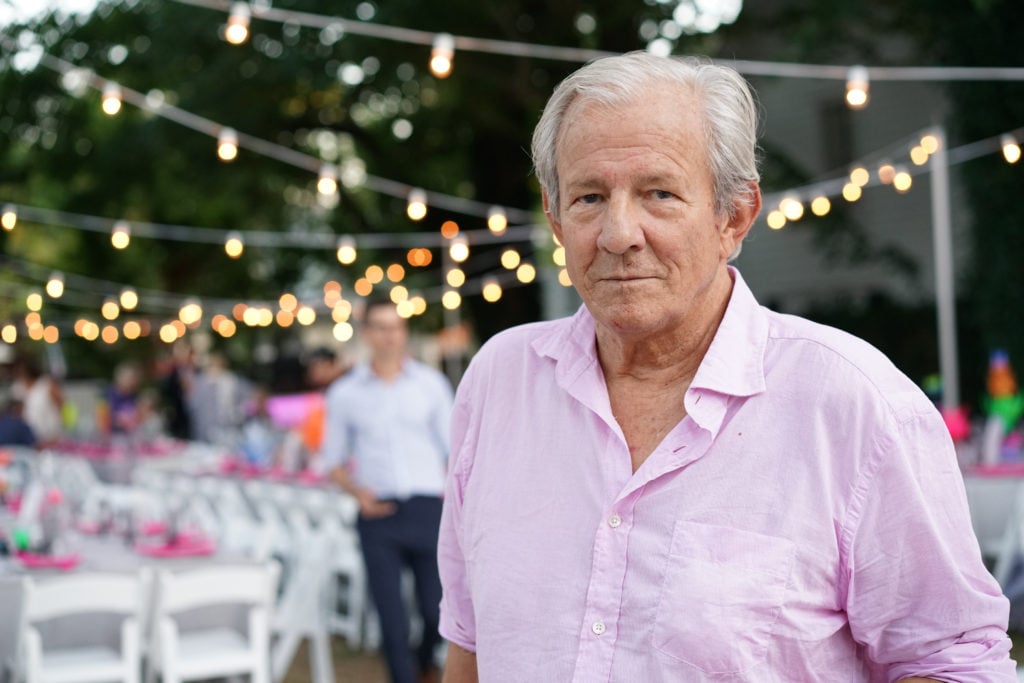
Bob Colacello, Natalie White, Delphine Diallo, and others share their memories.

Sarah Cascone

Last week, renowned wildlife photographer Peter Beard was found dead in Montauk, New York, at the age of 82. We asked some of his friends and colleagues for their remembrances.
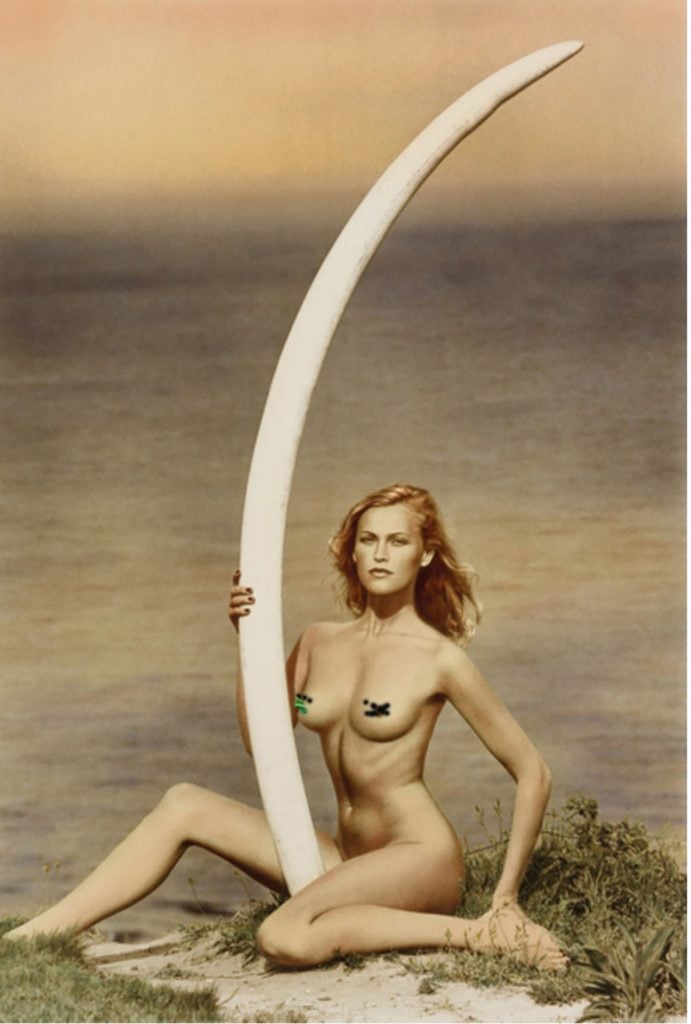
Peter Beard, Margrit Rammé with world-record bull elephant tusk. Photo courtesy of Margrit Rammé.
During my career, I did not do many nude photos. But since running around naked in front of one’s boyfriend is natural, there are quite a number of Peter’s photos where I am wearing nothing, either in nature or in Montauk. The photo sitting at the edge of the cliff with the bull elephant tusk was taken in Montauk.
And when we were in London, at the National Museum of History, where the largest female elephant tusks are exhibited, Peter asked me to strip and lay down and he took those photos, now famous. He asked the guard to turn around, but I wonder if he listened.
Life with Peter was always an adventure. During one of the summers, when the Rolling Stones rented the house next to Peter’s compound, they hung out with us all the time, giving us private concerts around the fire. I still have photos that Peter took of me combing Mick Jagger’s hair.
Especially in Africa, Peter often exposed himself to danger. When we talked about it, he usually said that he has no interest of dying in a bed.
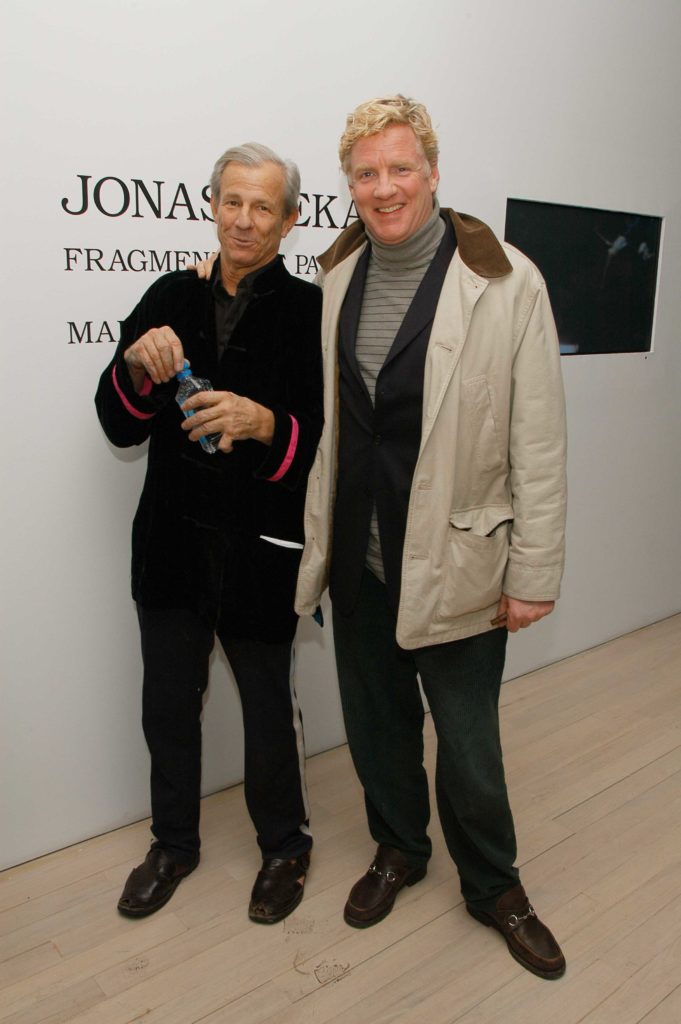
Peter Beard and Peter Tunney in 2005. Photo by Chance Ye, ©Patrick McMullan.
Peter had this overarching wisdom and it would captivate people. The way he dressed, the way women just flocked to him—the whole thing. It was just devastating magnetic charm, and if he turned it on, you were cooked. You would do whatever he asked.
And I did it happily. I thought we were committing financial suicide. We used to spend millions of dollars to put up a photography show and sell the photos for a thousand dollars. What we did was not economically wise. Who would do that? But I flew off the cliff of optimism and just went for for it.
Peter said we have to do this show in Paris at this bookstore La Hume. I really didn’t know what he was talking about. Why would we do this show in the windows of a book store?
But we got there, and I see Peter come marching down the street with 20 people, all carrying ancient taxidermy specimens—including a baby elephant and a panther—from Deyrolle, this legendary taxidermy shop. Peter, said “we gotta put these in the windows!” Just when you think you’re doing a good job, Peter is always like 90 steps ahead of you.
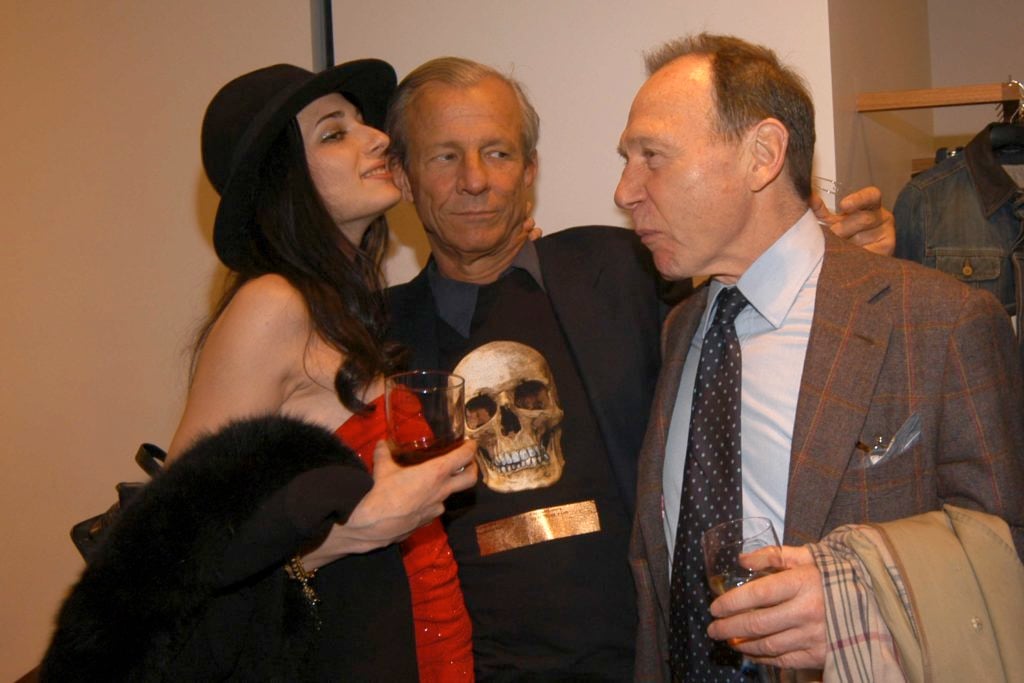
Lisa Melezhik, Peter Beard, and Anthony Haden-Guest in 2005. Photo by Nick Papananias/Patrick McMullan via Getty Images.
Peter was very nonchalant about his photography. He acted more like British people do. He had an incredible eye and he made wonderful photographs. He told me, “I think the concerned photographer is the tragedy of photography.” Meaning it was just a thing he did, it was a hobby. That wasn’t him being pretentious.
He had two major art forms, photography and his collaged diaries. Terrific work. When his windmill burned in 1977 he lost many of those. He lost paintings by Picasso and Francis Bacon. But Peter never complained about it. He didn’t bang on about it. In that way he had a very European attitude to life, more than an American one.
In some ways Peter was very wonderfully old-fashioned. He was an incredible professional, and a superb photographer. Peter was one of the most unusual individuals I ever met. And he was right on the button about the environment, wasn’t he? He had a good long run—it’s horrible what happened, but he died in nature.
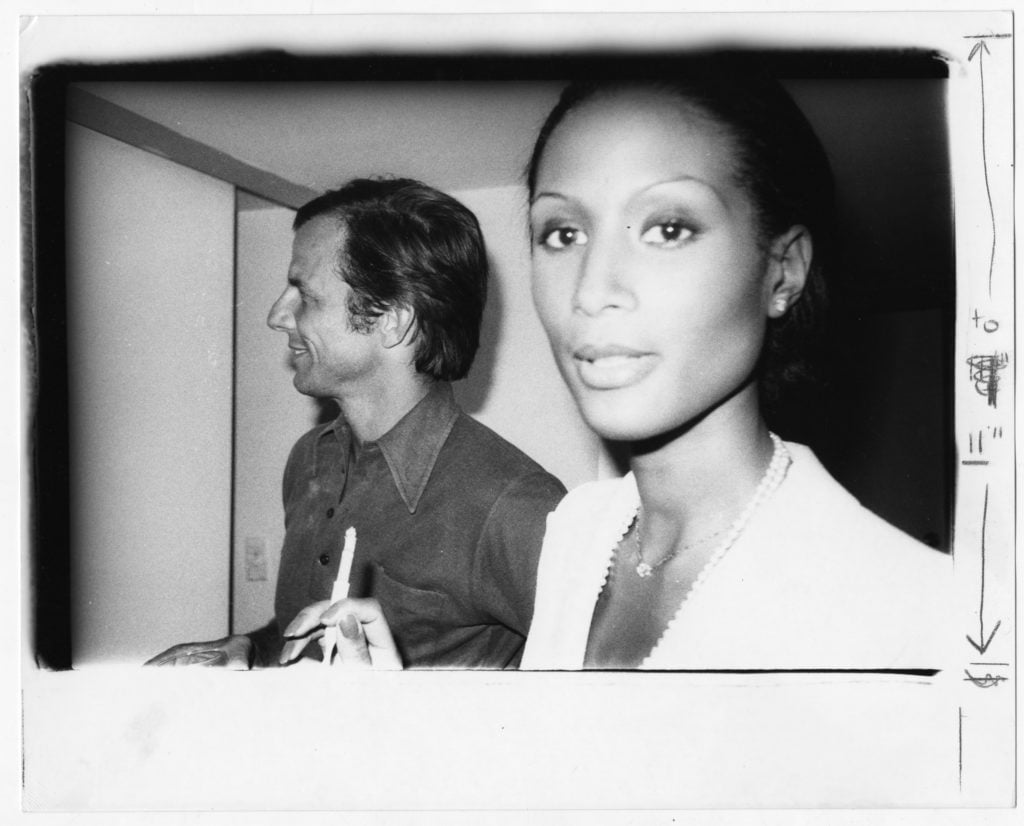
Bob Colacello, Peter Beard and Beverly Johnson, Halston’s House, New York (1976). Photo ©Bob Colacello, courtesy the artist and Vito Schnabel Projects.
I met Peter in 1970, shortly after I’d been made editor of Andy Warhol’s Interview. Andy had been invited to dinner at the Algonquin by Peter’s rich uncle, Jerome Hill, one of the magazine’s initial backers.
Peter arrived with his first wife, Minnie Cushing, who was carrying a not-so-small snake from Kenya in her straw tote. I was immediately taken by Peter. Physically beautiful and strong, he was also possessed of a passion for art, literature and philosophy, quoting Nietzsche, Blake, and Francis Bacon at will, as if Tarzan had gone to Yale.
Peter’s creativity was alarmingly boundless and non-stop. Even in a taxi, he’d be working away on the diaries he kept in large leather-bound albums given to him by Jackie O—filling pages with instant collages, glueing images of models ripped out of Vogue and Bazaar next to his photographs of African wildlife and landscapes.
It was quite a thrill to have him ask for my phone number and watch him insert it between Dali’s and Verushka’s. They don’t make them like that anymore.
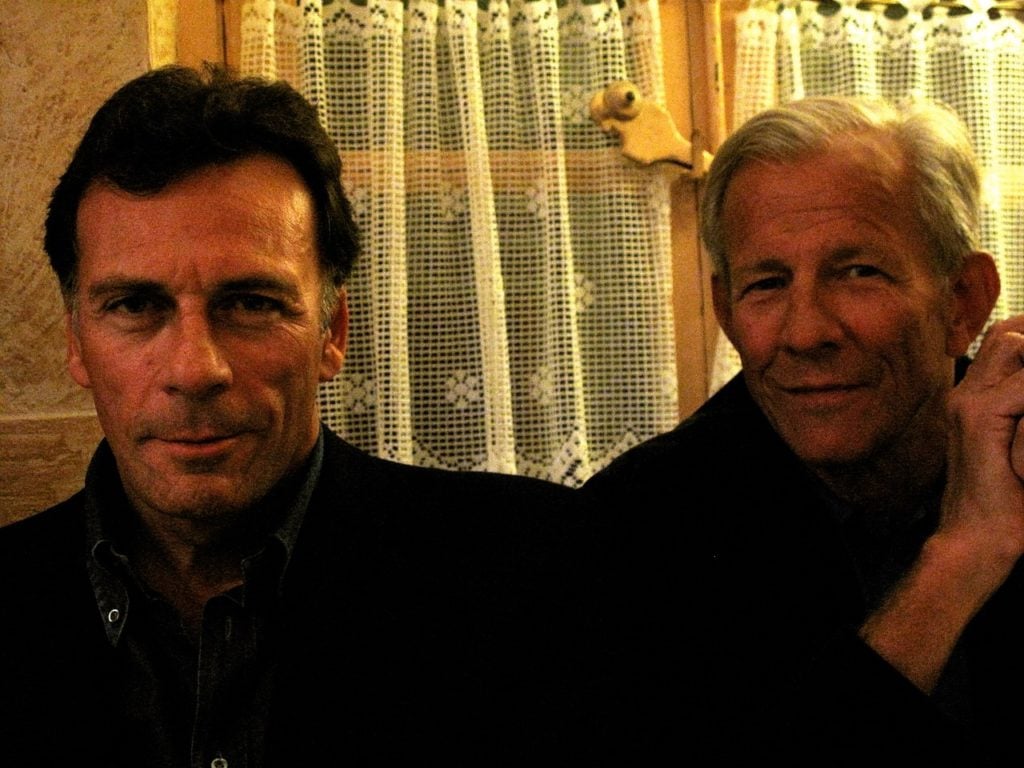
Nicolas Rachline and Peter Beard. Photo courtesy of Nicolas Rachline.
I met him in New York in 1989 through Richard Avedon biographer Steven ML Aronson. If memory serves, Peter greeted me at his then-agent Peter Riva’s apartment on the Upper East Side wearing a sarong, a polo shirt, and hand-made African sandals that he would wear all year-round, rain or shine.
I was producing a documentary on Australian model Elle Macpherson, and asked Peter if he’d be interested in directing it. Peter adored women and particularly those he called “Living Sculptures.” Elle certainly fitted the definition.
We met several times, but nothing really came of these brainstorming sessions that didn’t included enormously expensive shoots in Africa and other places. I loved all his ideas, of course, but feared I would get way over my head with them and never get it done. But our friendship began then and never ended.
I owned a small house in Bridgehampton, Long Island, and my friend Randy Schindler, who founded and published Hamptons Magazine, took me to see Peter shoot for the magazine in his now legendary Montauk house. Peter was at the height of his creativity, strength, and beauty and he was, most of all, extremely generous and humble. He let me film and photograph him without the slightest hesitation.
Years later, I met Peter again in Paris where the Centre National de la Photography was holding a massive retrospective of his work. He was in wheelchair after barely surviving being gored through the leg by an elephant while shooting in Kenya a few weeks earlier.
The show was absolutely grandiose, and it was while admiring the dozens of intricate, elaborate, colorful, sometimes terrifying collages on photographic prints that I took the full measure of his artistic genius.
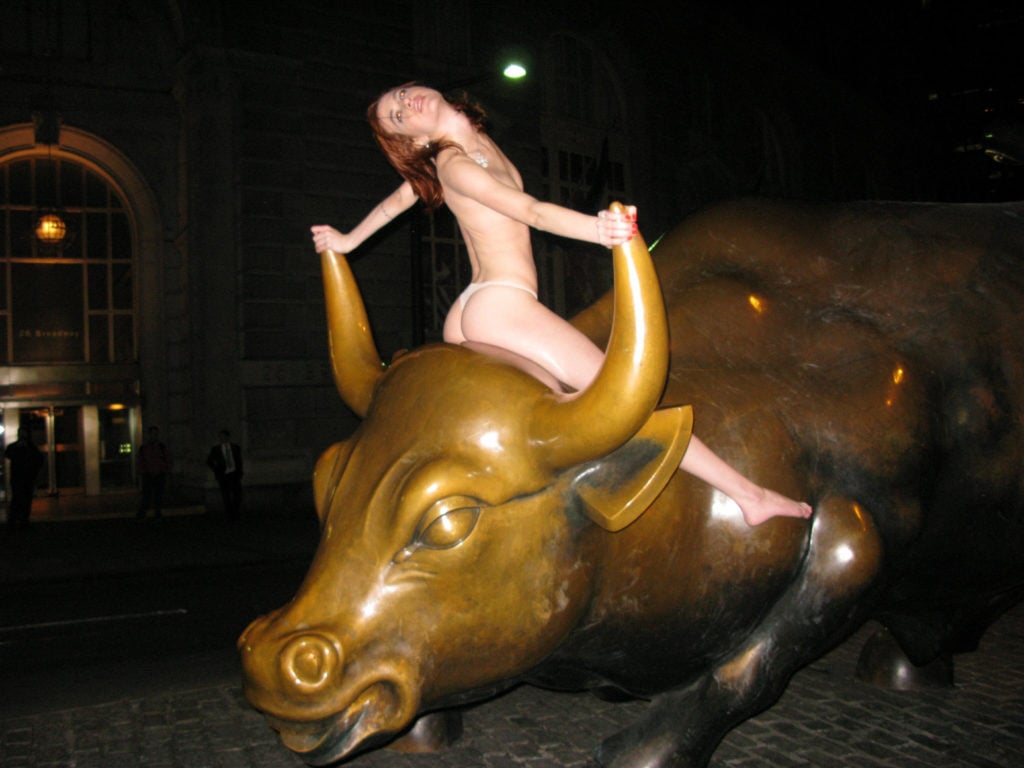
Natalie White poses for Peter Beard in the infamous Wall Street bull photo shoot. Photo courtesy of Natalie White.
When Peter and I met at Bungalow 8, I had just arrived to New York City from West Virginia and I didn’t really have a lot of knowledge of the art world. He immediately asked me to be his muse. I had no idea what a muse was. He asked to take photos of me and I asked him if he had a business card, he didn’t. He wrote his number down on a napkin and we started shooting the next day.
One of our most memorable photoshoots was back in 2009. We were having dinner at Cipriani downtown. Arturo Di Modica was there and asked us if we would consider doing a photo shoot on his bronze Wall Street Bull. Our immediate reaction was yes, let’s do it right now. Even though it was cold that night I didn’t mind getting topless on the Bull, it was about getting the shot.
We went down with an entire entourage of people and a friend hoisted me onto the bull towards the horns. The most memorable part was buses full of tourists stopped traffic to take photos; it caused a gridlock. Also Peter’s quote in the New York Post was priceless: “It’s the only thing I’ve ever done in finance.”
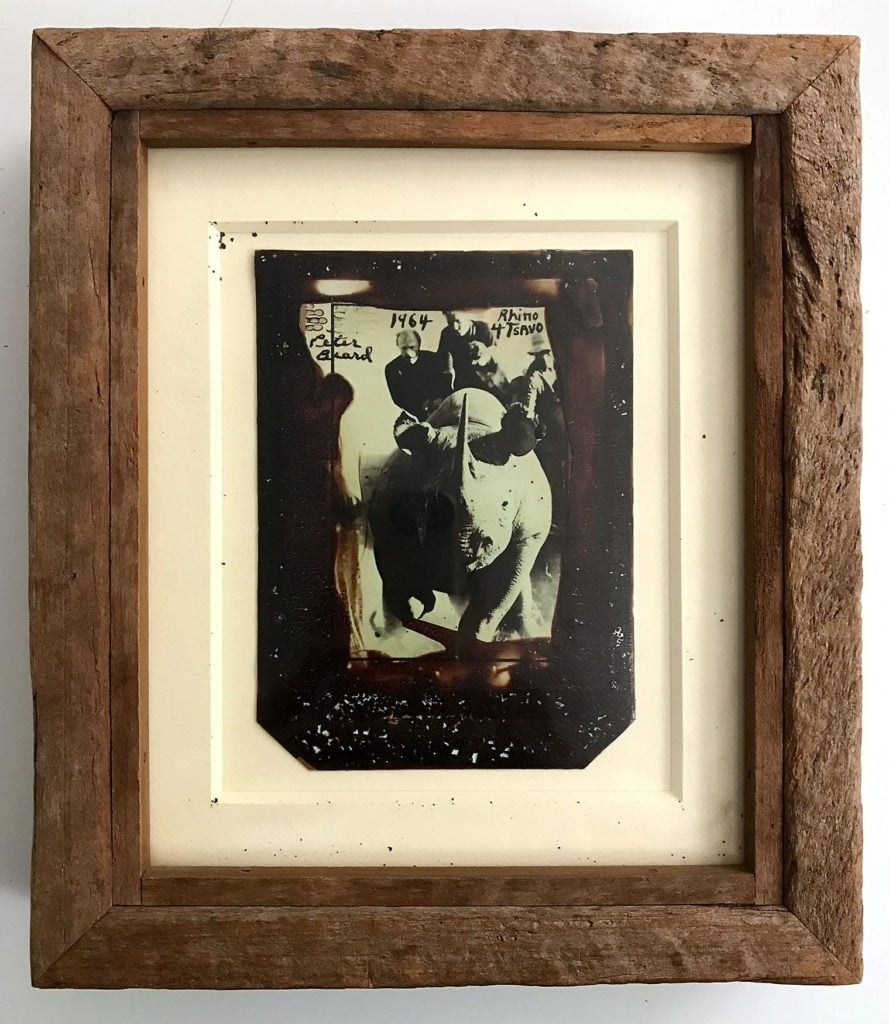
Peter Beard, Roping Rhino, Polaroid Photograph, Black and White (1964) in one of his signature driftwood frames, a style developed with Noel Arakian. Photo courtesy of Sotheby’s New York.
I live about two miles from Peter Beard in Montauk, and I met him in 1972 when the Rolling Stones were here. They had their shows at Madison Square Garden, and after their shows they would come out here to hang out.
One night at a local bar, Shagwongs, that Peter used to go to all the time, he introduced me to Mick Jagger. I think Keith Richards was there too. Everyone was drinking a drink called the White Beach. I think it was vodka and milk. It didn’t stick. It just seemed like they were relaxing and having a drink.
Soon after that, we started collaborating on making frames for his pieces. I was in the building business; I had done a lot of carpentry work. It was really easy to work with Peter. He was a lifelong friend and a mentor. He was never too intense about anything. He just thought up different ideas. He just wanted to explore.
He was so multifaceted, and he lived such a rogue life, wild and free. Peter was a rascal. He just had this mischievous way about him. He would duck out of the house and go find friends and party. He’s a soul that we’re all going to miss—somebody who touched so many people with his energy and inspiration.
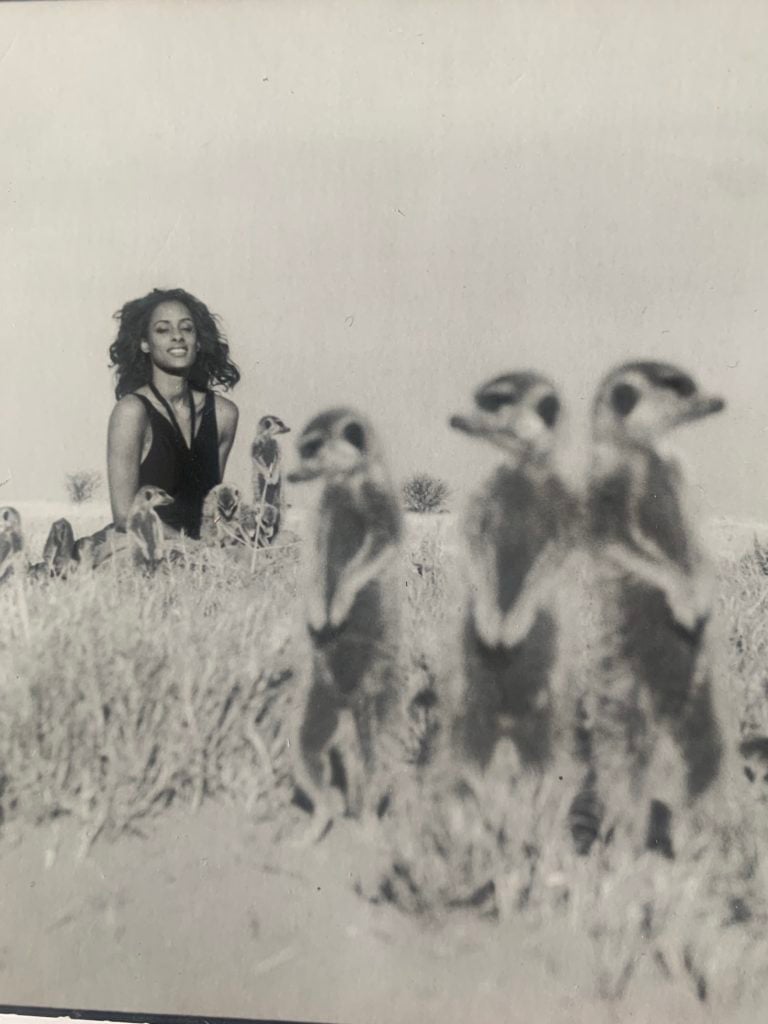
Peter Beard, outtake from the 2009 Pirelli calendar featuring Delphine Diallo. Photo courtesy of Delphine Diallo.
We met in Paris in 2008 during a charity event for a fashion luxury band. I was a graphic designer and an art director, and I was a fan of Peter’s work. When we discovered each other, seated side by side during the dinner, my surroundings disappeared. We talked for two or three hours nonstop—we had a lot in common: our love of life and nature, and creativity. It was a very intense exchange.
When I was back in New York, Peter called me. I was working on a job at a production company as a special-effects artist. He said, “What are you doing in April? What about if I invited you to Botswana? You’re going to be my assistant and I’m going to photograph to do some test shoots for the Pirelli calendar.”
We flew to Botswana. That was the most amazing adventure of my life. It allowed me to see the most beautiful landscapes in the world, Okavango. We stayed at Abu Camp. The tent was huge, it looked like a palace inside.
Peter was always waking up super early even if he went going to bed late. Peter was a machine of work, of creativity. He would do his collage and write in his diary every day. That was his ritual, his meditation. I was with him many times when he did it, and it was very inspirational to see a 72-year-old man keeping the fire within him.